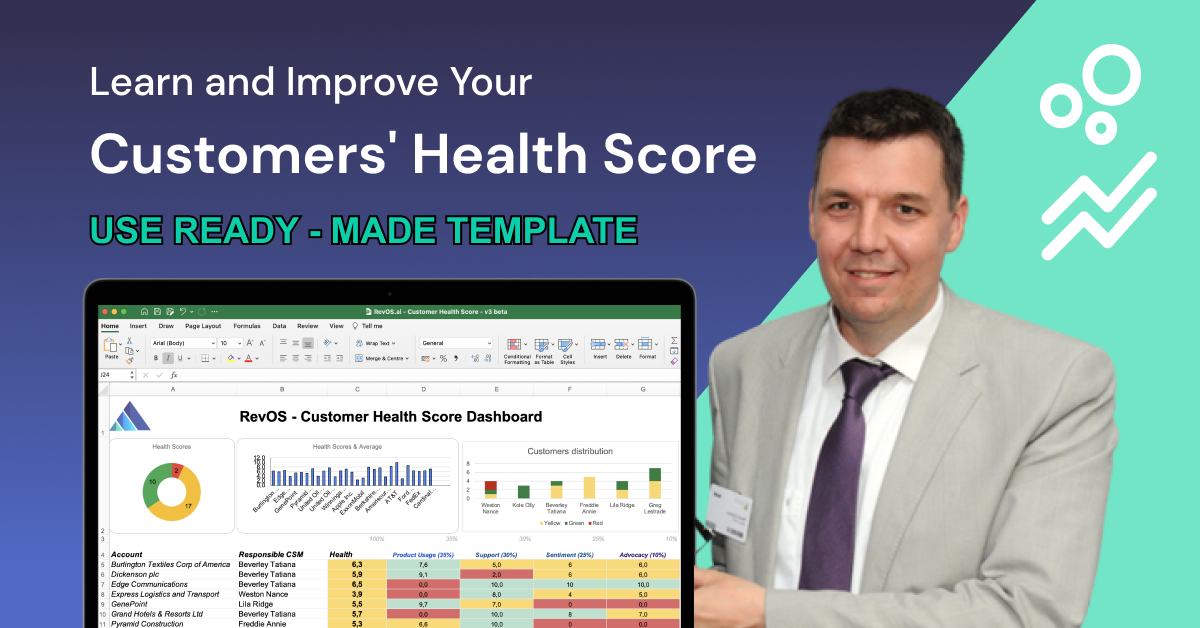Customer Health Metric: Time to First Reply (TFR)
 Renat Zubayrov
Renat ZubayrovA customer health score metric that measures the time to first reply (TFR) is used to track the responsiveness of a customer service team. In our upcoming blog series, we will be discussing the time to first reply as a key performance indicator (KPI). Stay tuned to learn more about how this metric can impact your business's customer success strategy.
This metric calculates the median time (in hours or minutes) it takes for the team to respond to a customer inquiry, such as an email or a ticket. The median is used instead of the average because it is less affected by outliers and provides a more accurate representation of the team's performance. A lower median time to first reply indicates a more responsive and efficient customer service team, while a higher median time may indicate a lack of resources or delays in the team's workflow.
It’s important to take a median value (and not the average) so that particular outliers won’t affect the value too much, as well as we usually take only business hours so that for example a ticket raised on Friday evening that was responded on Monday morning won’t skew the statistics.
Benchmarks
The good values for the median time to first reply KPI will depend on the specific needs and expectations of the organization and the customer. However, generally speaking, a shorter median time to first reply is considered better.
For example, if a company's goal is to respond to customer inquiries within 24 hours, a median time to first reply of less than 24 hours would be considered good. If a company's goal is to respond to customer inquiries within 1 hour, a median time to first reply of less than 1 hour would be considered good.
It's important to note that a shorter median time to first reply may not always be possible or practical for all organizations, especially those that have a high volume of customer inquiries. In these cases, setting realistic targets and continuously working to improve the metric over time is important.
It could also vary by industry, for example, an e-commerce company may have a different standard than a healthcare company.
Challenges
There are several challenges in measuring the median time to first reply metric:
- Data collection: In order to measure this metric, accurate data on the time of customer inquiries and the time of the first response must be collected. This can be challenging if the company uses multiple communication channels (e.g. email, phone, social media) and if the data is not stored in a centralized location.
- Handling outliers: It’s important to use median time and not the average time to first reply. When calculated based on average of all customer inquiries outliers (e.g. very long or very short response times) can skew the results. It's important to identify and handle outliers appropriately.
- Measuring only business hours: it’s important that response time for each inquiry is measured based on the business hours that tickets opened on Friday night and responded to only on the next Monday morning do not create statistical outliers.
- Difficulty in measuring team performance: This metric aims to measure the performance of the customer service team as a whole. However, it can be difficult to pinpoint which team members are responsible for delays in response times.
- Difficulty in measuring the quality of the response: The metric also does not measure the quality of the response given. It could be that the team responds quickly but the response is not useful or helpful.
Alternatives
There are several alternative metrics that can be used to measure the performance of a customer service team, in addition to or instead of the median time to first reply:
- Time to full resolution: This metric measures the amount of time it takes for a customer inquiry to be fully resolved. It provides a more complete picture of the customer service team's performance, as it takes into account not only the initial response time, but also the time it takes to resolve the issue.
- Customer satisfaction: This metric measures how satisfied customers are with the service they receive. It can be measured using surveys, Net Promoter Scores (NPS), or other customer feedback methods.
- First contact resolution rate: This metric measures the percentage of customer inquiries that are resolved during the first contact with the customer service team. It indicates how effectively the team is able to address customer concerns and resolve issues.
- Repeat contact rate: This metric measures the percentage of customer inquiries that require more than one contact with the customer service team before the issue is resolved. It indicates how well the team is able to resolve customer concerns on the first attempt.
- Resolution time by channel: This metric measures the time it takes to resolve a customer inquiry for each communication channel (e.g. email, phone, social media). It allows the company to identify which channels are causing the most delays and focus on improving them.
- The number of customer inquiries: This metric measures the number of customer inquiries that the customer service team receives in a given period of time. It allows the company to understand the workload of the customer service team and adjust resources accordingly.
Are you looking to improve your customer success strategy and boost your business growth? Look no further than our practical course on Customer Health Scoring, including a customizable template! And now with a code LINKEDIN50 you’ll get a 50% off the regular price.
This practical course provides valuable insights into using customer health scoring to improve customer engagement, retention, and loyalty. You will learn how to develop a robust customer health score metric and track it over time to identify trends and opportunities for improvement.

Our course includes a step-by-step guide to creating a custom template for your customer health scoring, so you can quickly and easily start measuring the health of your customer relationships. Plus, you'll receive hands-on support and guidance from our team of experienced instructors.
Whether you're new to customer health scoring or looking to refine your existing strategy, this course is the perfect way to take your business to the next level. Enroll now and start boosting your customer success today – don't wait!
Read more about revenue operations, growth strategies, and metrics in our blog and follow us on LinkedIn, Youtube, and Facebook.
← Go back to blog